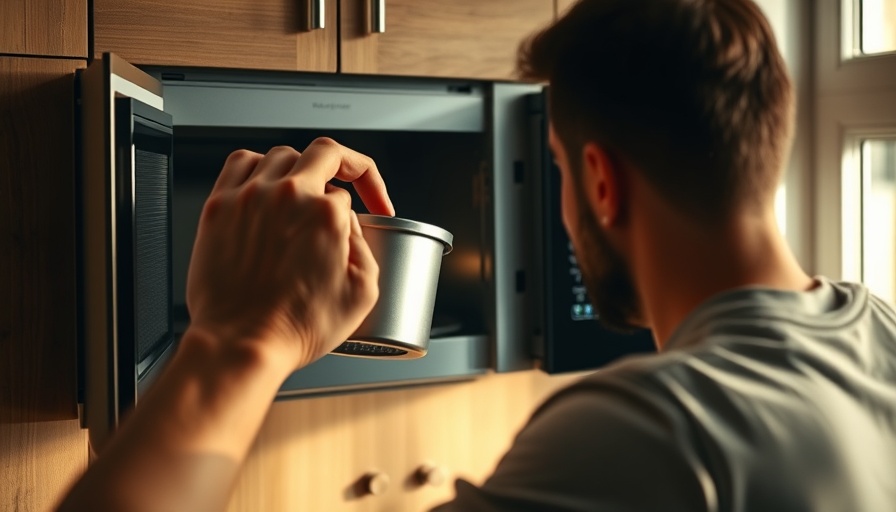
Understanding the Science Behind Microwaving
Most of us have at least one story about a shocking microwaving mishap. Remember that time you accidentally left metal in the microwave? If not, you're lucky! While microwave cooking is a convenient way to heat food, it’s essential to understand why certain materials, particularly metal, should be kept out of the microwave. Let's explore the science behind microwaves, the dangers of putting metal inside, and discover which materials are truly microwave-safe.
What Happens When You Put Metal in the Microwave?
When metal enters the microwave, it reflects the microwaves rather than absorbing them. This reflection leads to a build-up of energy and, eventually, sparks—often referred to as arcing. Think of it like shining a flashlight into a mirror, where the light just bounces back. Initially, you may notice tiny sparks, accompanied by popping or crackling noises. The smell of burning material might follow, and if left unchecked, it could result in something much more serious: a fire.
The kitchen can be a dangerous place, especially when unexpected accidents occur. Chef Maricel Gentile's experience with a dish towel containing hidden metal threads burning in the microwave serves as a critical reminder: “This experience taught me to keep anything with metal far away from the microwave.” So, what should we do if we accidentally put metal in? Appliance repair expert Matthew Morrison advises to unplug the microwave or hit the stop button immediately—your safety is the priority!
Identifying Microwave-Safe Materials
Aside from avoiding metals, knowing what materials are safe to use in the microwave is key to preventing mishaps. Microwave-safe dishes typically allow microwaves to penetrate and cook the food without absorbing or reflecting the energy. The safest materials include:
- Tempered Glass: Offers visibility while cooking and is resistant to thermal shock.
- Ceramic and Stoneware: Perfect for holding heat without releasing harmful chemicals.
- Some Plastics: Ensure they are labeled as microwave-safe to avoid melting or leaching chemicals into food.
However, not all plastics are created equal. Avoid using Styrofoam containers, as they can melt and potentially release harmful substances. You might also encounter dishes marketed as microwave-safe that still require caution; use an oven mitt when handling them once heated.
Microwave Cooking: The Do’s and Don’ts
If you've ever wondered about microwave-safe metals, you're not alone. There are a few specialized metal trays made for microwave use, as well as the rounded steel racks commonly found in microwaves. However, even with these options, it’s wise to avoid thin metals or anything with sharp edges.
In terms of effective food heating, there are fantastic materials available that promote safer cooking. Always strive for durable options like tempered glass or quality ceramic. This will not only keep you safe but also ensure that your meals are delicious!
Learning from Experience: Avoiding Mishaps in the Kitchen
The kitchen can be a creative space, but it also requires safety awareness, especially when using appliances like microwaves. As you navigate cooking, pay attention to the materials you are utilizing to prevent mishaps that could risk ruining your meal or worse, causing kitchen fires. Remember, learning from mishaps not only makes you a better cook but keeps your cooking space safe—an essential part of any home.
In a world where technology and cooking often blend, it's essential to be informed and cautious. As we look toward the future of home cooking, understanding materials and their safety in appliances like microwaves remains a crucial skill.



Write A Comment